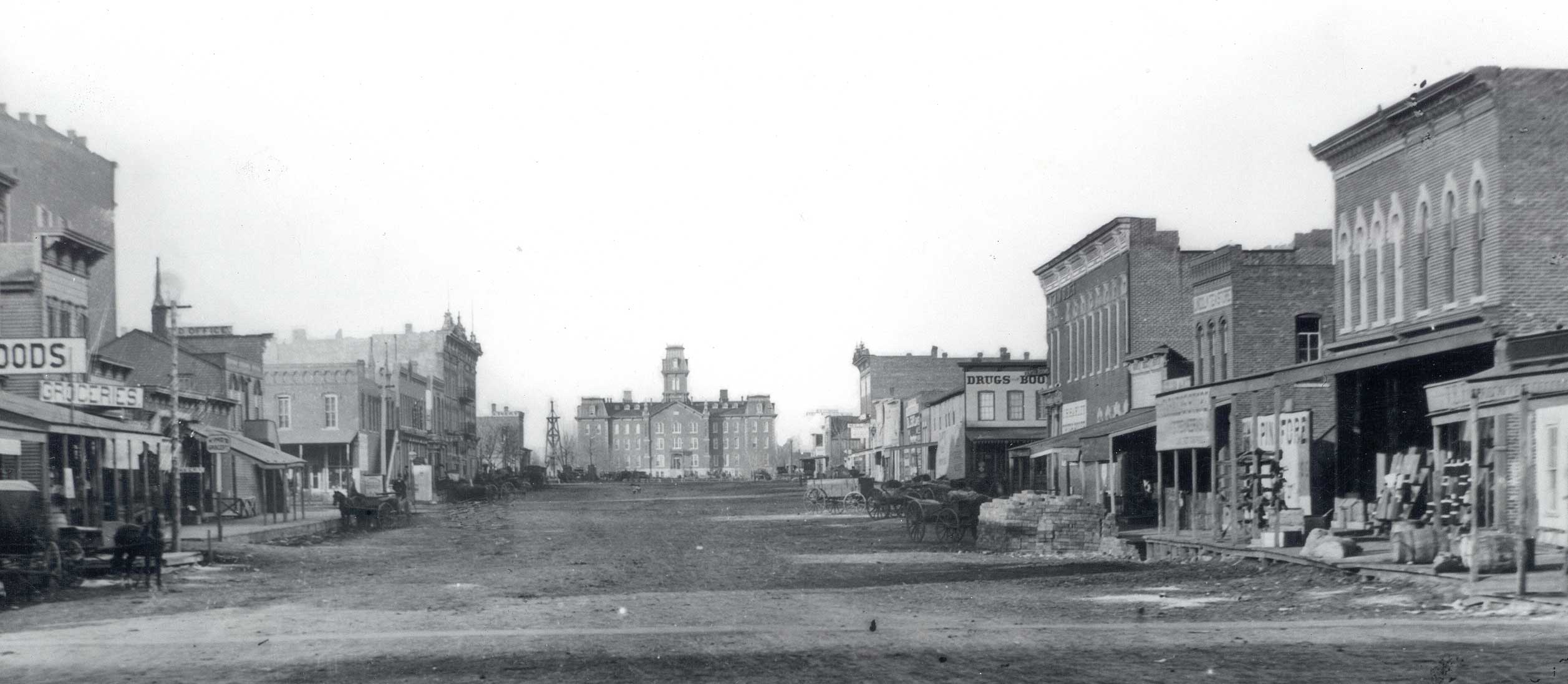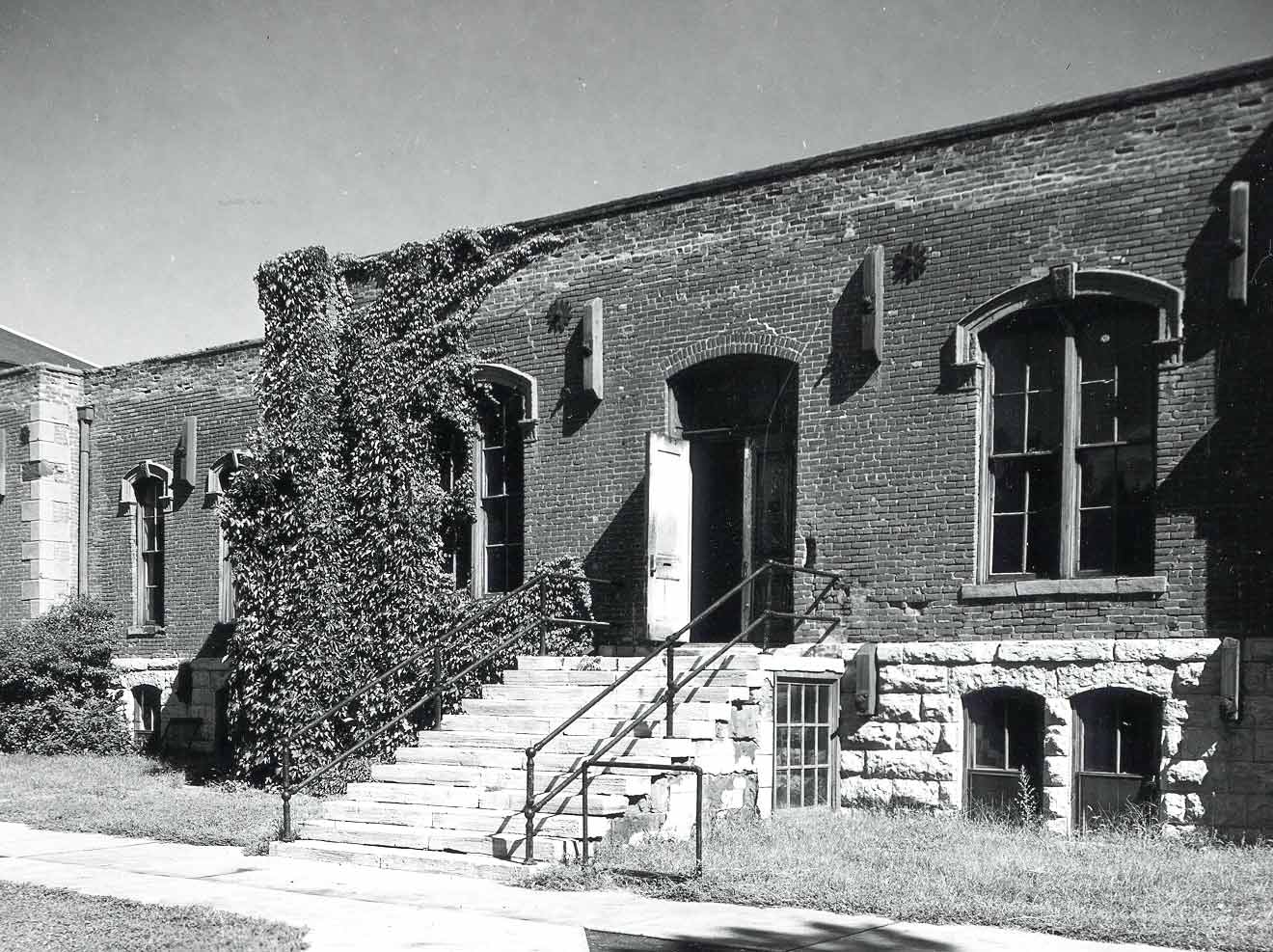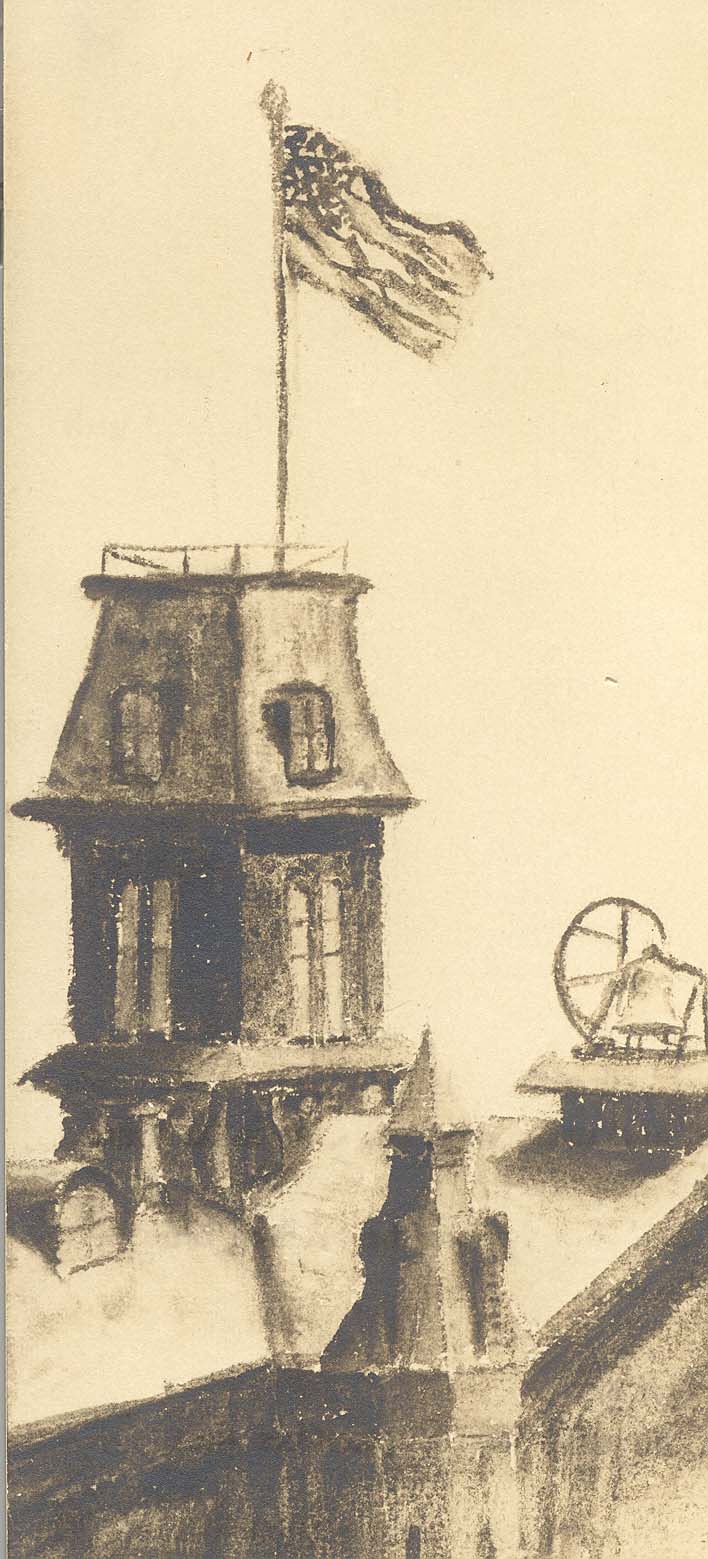Projects
| University Hall ... a grand site on
the open prairie |
| |
| University Hall, 1871
|
|
Construction of
the first building on the University of Nebraska-Lincoln campus, University
Hall, began just a few months after the University was founded in 1869.
University Hall, or U-Hall, represented the aspirations of the local and
state community and developed from an idea "that the new state needed
an institution of cultural learning; it was built for farmers and frontiersmen
who sought for their children the culture which the centuries had accumulated."
(Cornhusker Annual 1925) Homesteaders, pioneers and their children, many
of whom still lived in sod houses, saw the new university building as
an inspiration for the future.
Workers placed
the cornerstone for the building on 23 September 1869. Citizens of Lincoln
celebrated this first step with speeches by the state governor and attorney
general, a banquet that served over 1000 people, and a brass band from
Omaha that kept people dancing until 4 a.m. Despite its celebratory beginnings,
U-Hall also garnered criticism because of the cost of building the structure.
Nebraska had just recently achieved statehood and many Lincoln residents
believed the plans for the University had developed too hastily.
The original proposal
for building U-Hall gave a cost of $128,000 and the final cost increased
to $152,000 before construction ended. Shipping lumber from Chicago to
East Nebraska City, an early town just five miles east of the Missouri,
added to construction costs. Oxen teams and wagons hauled the lumber over
65 miles of prairie roads to Lincoln. |
 |
| Looking
north at University Hall from 11 Street, Lincoln, Nebraska |
|
In 1871, the first
classes were held in U-Hall, when six faculty members provided instruction
to about 20 students. The building housed administration, a recitation
hall, student classes, a boys dormitory, the library, and a chapel. The
attic housed the offices of the first student newspaper, The Hesperian,
and organizations such as the Y.M.C.A. and the U.S. Post Office claimed
space. A wide variety of social activities, such as debate clubs and literary
societies took place at U. Hall. For fifteen years, it remained the only
building on campus.
University Hall
suffered from faulty construction from the moment the doors of the building
were opened. The building was immediately declared unsafe and three professional
architects were employed to examine it, their report, which came out in
June 1871, pronounced the structure safe and classes began as scheduled
in September 1871. Six years later, the north wing of the building was
abandoned and a second team of architects examined the structure. This
team declared the building unsafe and proposed a complete new building.
While the University Board of Regents resolved to build a new building,
Lincoln citizens were reluctant about the idea. They did not want to chance
a decision to remove the University to another city in the state. Architects
hired from Chicago and Dubuque declared the building could be repaired
with a new foundation. Lincoln took on the cost of the new foundation
and a new roof. |
| 
|
| University
Hall after the top two floors were removed, 1925. |
The early repairs
kept the building in use until 1925, when it was declared structurally
unsafe. The top floors of the building were removed. The damage to the
original foundation, and deficiencies in the materials used to construct
the building added to its demise. UNL students and alumni were vocal
about the loss of U-Hall. For over fifty years it had served as a place
of historical and educational importance. George P. Shidler, a 1903
graduate, claimed that "what all Mid-western universities need is something
which modern architects cannot provide by skills or craftsmanship, and
that is tradition. U-Hall is tradition at U. of N. She was born from
the virgin prairie when the campus was but waving buffalo-grass. She
stands a monument to the dreams of those sturdy pioneers who passed
beyond. The old brick building was the University of Nebraska to them
because she was the mental picture which flashed through their minds
when the University was mentioned. Tradition and sentiment are more
lasting than style. We want Her the way She was when She adopted the
thousands of farm boys and girls who came to Her from the Land of the
Flat Waters, the homes of kerosene lamps and horses and buggies and
corn and cattle and hogs." (Nebraska Alumnus, 1925)
Miss T. Agnes
Gordon taught the last class held in U-Hall on 21 May 1948, Bulldozers
leveled the remaining floor the same year.
|
| |
Old U. Hall 1870-1925
Brave old Tower!
Serene and wise and kind,
Gazing for fifty years across a prairie land,
From whence came trooping eager boys and girls.
You called them in for blessing,
For mothering a while.
Fifty years. And now--
"A lonely place against the sky."
A man loves long the places where he once was young.
Buildings have faces, - aye, and souls as well;
There are no empty rooms.
For every brick that falls
From the crumbling walls,
Some clear, bright memory lives;
Voices ring in the long, high halls;
The silenced bell still peals
For victory, and undaunted calls, as in its prime,
To duty and to prayer;
The bright flag flies against the arching blue;
The light shines there.
Brave old Tower!
A hundred thousand hearts remember thee.
Flora Bullock, '97 '99
|
 |
Resources:
- University
Hall, Building and Grounds File, Archives and Special Collections,
University of Nebraska-Lincoln
- "Base
of a Toppled Monument," The Nebraska Alumnus, September
1948
- "U-Hall
Gives Up Long Fight," The Nebraska Alumnus, December
1925
- University
of Nebraska Department of Public Relations, "A Sketch of
the Circumstances and Events Leading to the Chartering of February
15, 1869 of the University of Nebraska and a Report on Phases
of the Early Life of the Institution," n.d.
|
|
| |
|
|
|

